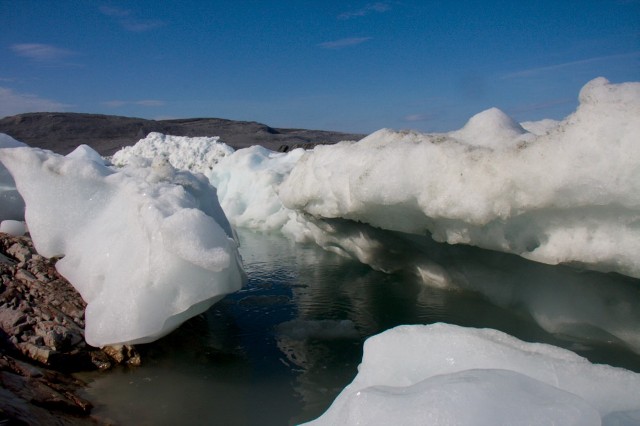Feb 4 2016
Glaciologists and mathematicians from the University of Alaska Fairbanks have carried out a study to discover how sea levels are affected by the glacier ice flowing off Greenland.
 A spot where the Jakobshavn Isbræ is melting. (Photo by Martin Truffer)
A spot where the Jakobshavn Isbræ is melting. (Photo by Martin Truffer)
Field tests and mathematical computer models were used by Andy Aschwanden, Martin Truffer and Mark Fahnestock to replicate the flow of 29 inlet glaciers fed by the Greenland ice sheet. The data was compared with the data from NASA’s Operation IceBridge North aerial campaign. The results from this comparative study highlight that the computer models precisely replicated the current flow conditions in Greenland, which is topographically complex.
The recent edition of Nature Communications features the work executed by these researchers, in collaboration with UAF’s Geophysical Institute.
Truffer, physicist in the Geophysical Institute’s Glaciers Group, stated that the time was just perfect for the comparison.
Better computer models and NASA’s high resolution data set made the difference. Each part needed each other to make sense. It couldn’t have happened without either.
Martin Truffer, Physicist, Geophysical Institute Glaciers Group
The research has taken over ten years, as it has faced issues with understanding the thickness of Greenland ice. Information on the thickness of the ice was provided by the NASA campaign, which used an enhanced ice-penetrating radar, created by the University of Kansas Center.
“The result has been a substantial improvement in our knowledge of subglacial topography, particularly in the deep channels feeding outlet glaciers,” the three wrote in the Nature Communications article.
The three researchers are now focusing on examining if the Greenland model can precisely predict how a Greenland ice sheet that is melting can affect the sea levels.